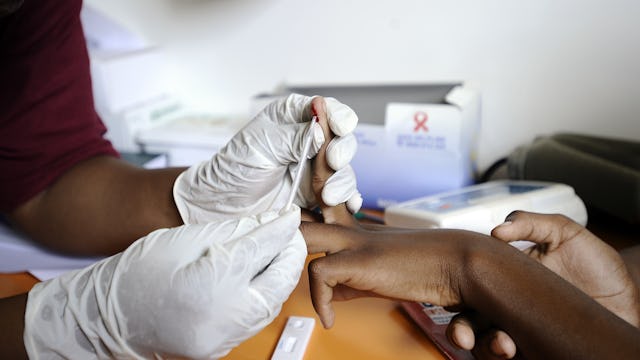Study Finds Americans Take Girls' Pain Less Seriously Than Boys

This could have implications for women’s healthcare treatment
Gender stereotypes of any kind can be detrimental for all involved. It turns out even expressing pain can be interpreted differently depending on whether the one expressing pain is male or female.
A recent study by Yale University found that adults, when viewing identical reactions to a finger-stick, believed the child to be in less pain when they thought they were female.
The study was conducted to “confirm, clarify, and extend” the findings from a 2014 study in Children’s Health Care which found people perceived pain in kids to be higher when they thought the child was male. The Yale study broadens that research (which was predominantly female participants) to adults ages 18 to 75 and spilt across male and female participants equally.
The study, published in The Journal of Pediatric Psychology, showed 264 adult participants an identical video of a five-year-old receiving a finger prick at a pre-Kindergarten doctor’s visit. The child in the video exhibited identical “pain-display behaviors,” but the group who watched the video of the child named “Samuel” said he experienced more pain than the group who knew her as “Samantha.”
“Explicit gender stereotypes — for example, that boys are more stoic or girls are more emotive — may bias adult assessment of children’s pain,” the study’s authors concluded.
Additionally, while male participants rated “Samantha” and “Samuel’s” pain more closely together, women participants believed the boys’ pain to be even more severe. Researcher Brian Earp said it was as though they thought, “‘For a boy to express that much pain, he must really be in pain.'”
“We really hope that these findings will lead to further investigation into the potential role of biases in pain assessment and health care more generally,” said Joshua Monrad, one of the study’s authors. “If the phenomena that we observed in our studies generalize to other contexts, it would have important implications for diagnosis and treatment. Any biases in judgments about pain would be hugely important because they can exacerbate inequitable health care provision.”
Obviously, the findings weren’t a shock to many:
This isn’t the first time this phenomenon has been front and center in the subject of women’s’ healthcare. Researcher Bairey Merz found that though heart disease is the top killer of women (and nearly twice as likely as men to die in the year following a heart attack), only 40 percent of women’s routine care looks into factors that may cause heart disease.
“Young women were more likely to be told to lose weight, where the young men who were actually more overweight were more likely to be put on effective preventive therapy,” Marz said. “People are always sort of judging women according to their weight.”
For women of color, the statistics are even more dire. Researchers found that black mothers in the U.S. die at three to four times the rate of white mothers, 22 percent more likely to die of heart disease than a white woman, and 71 percent more likely to die from cervical cancer. Though there are a multitude of reasons why this is so, not being taken seriously by medical staff is a primary concern.
The researchers in this study attribute this inconsistency in the level of pain to cultural myths like “boys are more stoic” or “girls are more emotive.” Bottom line: Women need to be believed when they express pain. It can be the difference between life and death.